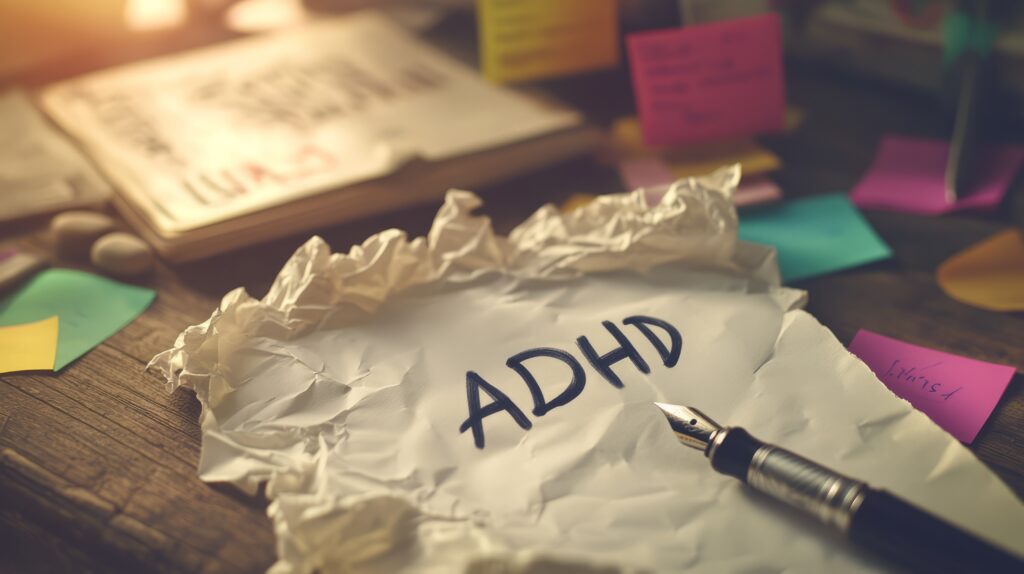If you have ADHD or you’re parenting a child who does, you’ve probably seen it happen. Books are open, notes are highlighted, the desk is set—but nothing sticks. Hours are spent reading and re-reading, yet the test comes, and the answers are nowhere to be found. It’s frustrating. It’s discouraging. And it’s not your fault.
The problem isn’t laziness or lack of intelligence. It’s that traditional studying methods weren’t designed with the ADHD brain in mind.
The Problem With Conventional Study Methods
Most students are taught to study by sitting still, staying quiet, and reviewing material for long periods. They’re encouraged to highlight, reread, and make outlines. But for someone with ADHD, these methods often lead to zoning out, mental fatigue, or complete shutdown.
Why? Because the ADHD brain works differently. It craves stimulation. It thrives on novelty. It requires movement, engagement, and frequent breaks to sustain attention. For someone with ADHD, passive study strategies like rereading or highlighting rarely produce results. Instead, they create boredom, frustration, and sometimes even shame.
ADHD also affects working memory, which means the ability to hold and manipulate information in real time is compromised. So even if a person understands the material while studying, they might struggle to retrieve it when it’s needed—like during a test.
What Actually Works: Active, Engaging Strategies
Fortunately, there are study methods that align with how the ADHD brain functions best. These strategies are more interactive, structured, and stimulating.
1. Active Recall
Instead of rereading a chapter, close the book and try to write down everything you remember. Then, check your notes and see what you missed. This technique strengthens memory through active engagement. It forces the brain to retrieve information, rather than just passively receive it.
Flashcards are also an excellent tool for active recall—especially digital ones like Anki, which use spaced repetition to keep the brain engaged and improve long-term memory.
2. Spaced Repetition
Cramming is a disaster for ADHD brains. It creates stress, overloads working memory, and leads to burnout. Spaced repetition solves this by breaking material into smaller chunks reviewed over time.
Reviewing a concept multiple times—over days or even weeks—gives the brain more chances to encode it into long-term memory. This method also aligns better with the ADHD need for shorter study sessions.
3. Multisensory Learning
ADHD brains respond well to learning that engages more than one sense. Watching a video, drawing diagrams, explaining concepts out loud, or using color-coded notes can make studying more interactive and effective.
If a student struggles with remembering definitions, try making up a silly song or drawing a comic strip that explains the term. The goal is to make it stick by making it interesting.
4. Movement and Micro-Breaks
Sitting still is often the fastest way for someone with ADHD to lose focus. Incorporating movement into study sessions—like standing while reviewing flashcards or walking while reciting notes—can help keep the brain alert.
Equally important are short, frequent breaks. Use a timer for 25 minutes of focus, followed by a 5-minute break. This is called the Pomodoro Technique, and it can help prevent overwhelm and mental fatigue.
5. Body Doubling and Accountability
Sometimes, just having someone else in the room—like a coach, tutor, or quiet friend—can help someone with ADHD stay on task. This is called body doubling. It creates gentle external pressure to stay focused and lessens the urge to wander off mentally.
Accountability systems, such as texting a study coach or checking in with a parent, can also create the structure needed to follow through.
Final Thoughts
Traditional study methods might work for neurotypical students, but for those with ADHD, they often feel like a trap. That doesn’t mean success is out of reach. It just means the strategy needs to match the wiring of the brain.
When studying becomes more active, engaging, and customized to the way the ADHD brain learns, everything changes. Confidence grows. Retention improves. And what once felt impossible starts to feel doable.
At ADHD Coaching Solution, I help teens and young adults rewire their study habits using cognitive behavioral techniques and brain-friendly strategies like the ones above. If you’re tired of watching yourself or your child struggle with conventional methods, it may be time to try a new path—one that actually works.
